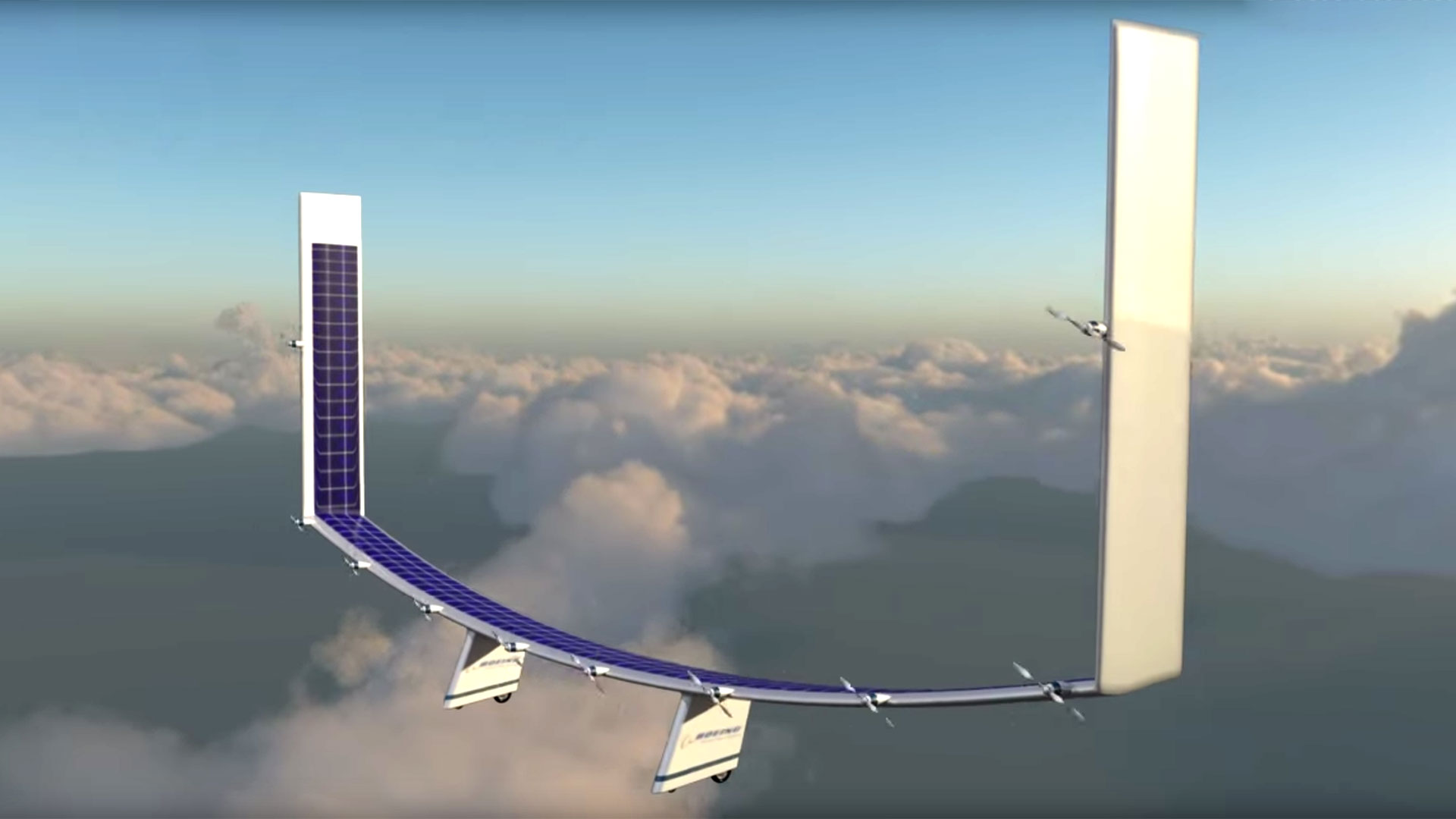

When it comes to flying around slowly at stratospheric altitudes for long periods of time, blimps, dirigibles, and other airships are hard to beat. But as a patent application recently made public reveals, Boeing believes it can compete with those buoyant craft with a solar-powered drone aircraft.
According to the patent revelation, Boeing’s Phantom Works division applied for a patent in 2014 that outlines a “Solar Powered Aircraft.” Equipped with a concave flying wing design and near-vertical winglets up to 70 percent the length of the main wing, the craft resembles a giant U-shaped brace dotted with 10 propellers. Unlike commercial airlines such as the Boeing 787, those winglets aren’t just for stability; they also gather low-angle sunlight, helping the Phantom Works drone hang in the sky for months or even years.
The patent application is vague as to the purpose of the stratospheric loiterer, stating, “For various reasons, it may be desirable to place a payload above a point on the earth’s surface for a relatively long time.” The public reason usually cited is communications, like providing Internet and cell service in remote areas; that’s why Google’s Project Loon played around with hot air balloons, and why Facebook is looking at solar-powered drones.
But as the last several decades of spy satellites have proven, parking something in the sky is also ideal for surveillance. Indeed, Boeing’s effort is merely the latest in decades of military-backed research dating back to the DARPA-funded Project Sunrise, an unmanned experimental aircraft from 1974. In the 1980s, NASA worked with the military on a HALSOL aircraft (High-Altitude SOLar) program, only to see it canceled twice. Resurrected a third time, it turned into the space agency’s current Pathfinder and mothballed Helios sun-fueled aircraft.
Considering the increasing amounts of public and private money alike flowing into the field of high-alitutude, long-loitering aircraft, it’s not surprising to see that Boeing is interested in this area of research. But just because the company has a patent for such a design doesn’t mean it intends to build it; the company does, after all, have patents for “a weird cargo-grabbing plane” and a “laser-powered fusion-fission jet engine.” And in spite of the global progress of the sunlight-fueled Solar Impulse 2, you shouldn’t expect other Boeing projects to go solar soon. A similarly sun-powered 747, for instance, would be about 99,000 horsepower short of the power it needs to fly.